Valve recently announced groundbreaking changes to the Dota Pro Circuit (DPC) that will introduce Regional Leagues to Dota 2’s global competitive scene once The International 2020 (TI10) has concluded.
There’s a lot to unpack in the announcement, so here’s a breakdown of how the new competitive Dota 2 landscape will look like next season.
Regional Leagues
Under the new system, the yearly DPC will be divided into three seasons — Fall, Winter, and Spring — each composed of six Regional Leagues in North America, South America, Europe, CIS, China, and Southeast Asia.
Each season will conclude with a Major event that will feature the best teams from each regional league.
The Fall League will run from October 5-November 15, with the Fall Major set for December 7-19. The Winter League will run from January 4-February 14, with the Winter Major set for March 8-20. The Spring League will run from April 12-May 23, with the Spring Major set for June 21-July 3.
As always, the DPC will conclude with The International in August.
Each of the six Regional Leagues will feature a prize pool of US$280,000 per season and will be divided into an Upper and Lower Division with eight teams each, for a total of 96 teams participating in the DPC all across the world.
Competition in the Regional Leagues will consist of full best-of-three Round Robin format matches among all the participating teams over the course of six weeks, with three days of competition each week.
DPC points will be awarded only to the Top 5 teams of the Upper Division of each league every season, with the Top 4 teams automatically qualifying to the Major in one way or another depending on their region.
The best-performing team in every Regional League will earn US$30,000, 500 DPC points, and a direct seed to the playoffs of the Major for that season. Meanwhile, the second-best team will get US$28,000, 300 DPC points, and a spot at the group stage of the Major.
Things start panning out differently for the third and fourth-best teams in a league depending on their region when it comes to making it to a Major. Teams that finish third and fourth in the European and Chinese leagues will qualify for the Major’s Wildcard Stage (more on that later), while only the third-place team in the North American and Southeast Asian leagues will be able to do so.
Perhaps the most welcome change in the new regional leagues is the introduction of a system for promoting and relegating teams.
After every season, the two bottom teams of the Upper Division will swap places with the top two of the Lower Division. Meanwhile, the bottom two teams of the Lower Division will be eliminated from the league and replaced with two new teams coming from Open Qualifiers.
This will allow for new teams and talent to be introduced into the scene over time and will reward teams in both divisions for consistent performances across seasons.
Here’s a breakdown of what each team in both divisions of the Regional Leagues will be getting at the end of each season:
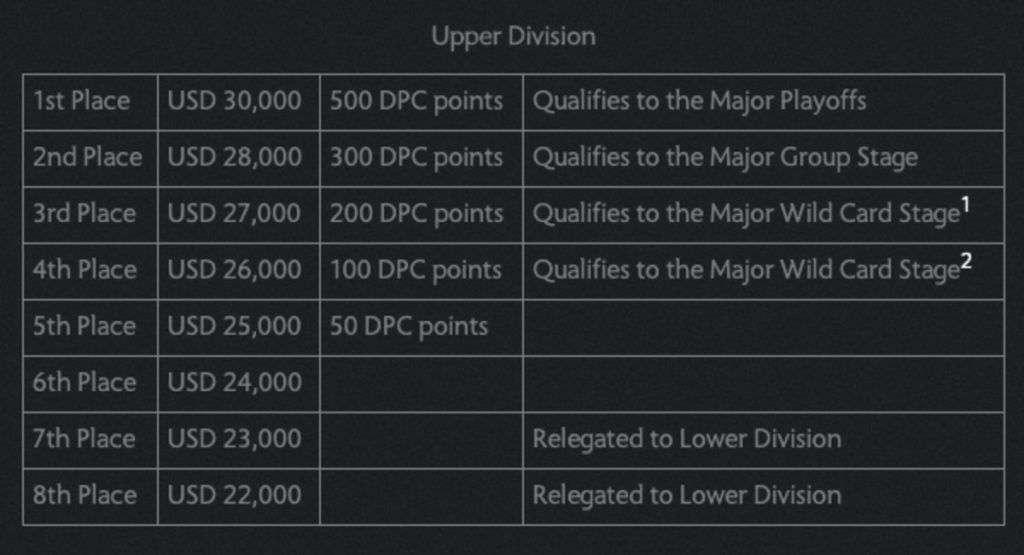
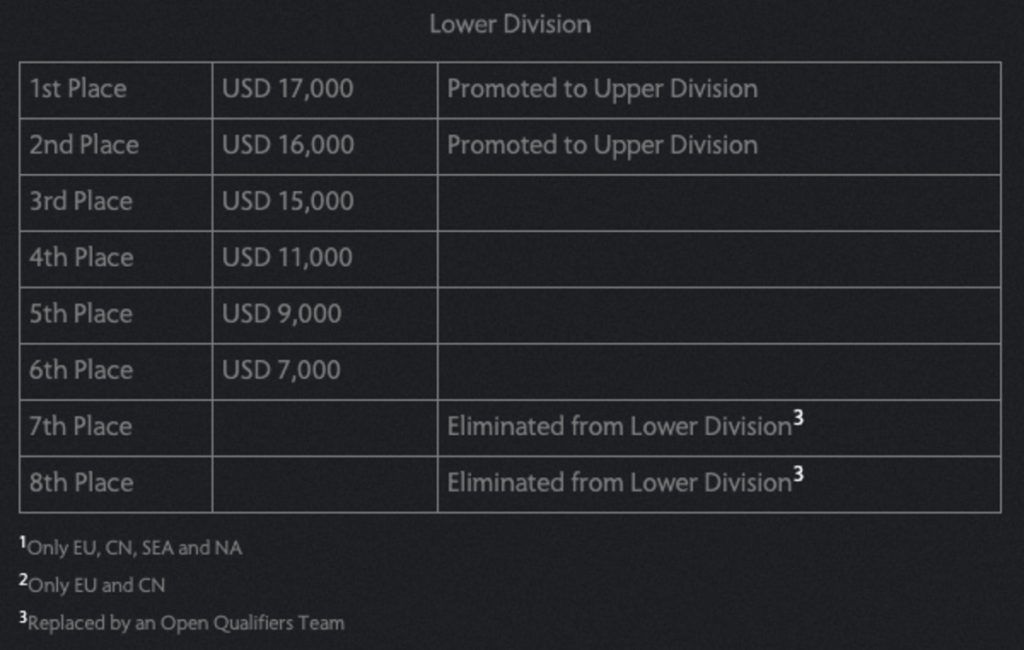
Alongside providing a better structure for the development of Tier 2 and Tier 3 teams in the DPC, the new system will also make it easier for fans to follow their favorite regions and teams.
All matches in every Regional League will follow consistent date and time slots. All Upper Division matches will be presented from studio broadcasts, while all Lower Division matches will be featured on DotaTV.
Here’s the weekly schedule for the regional leagues, with each slot representing a best-of-three series and all times in PST:
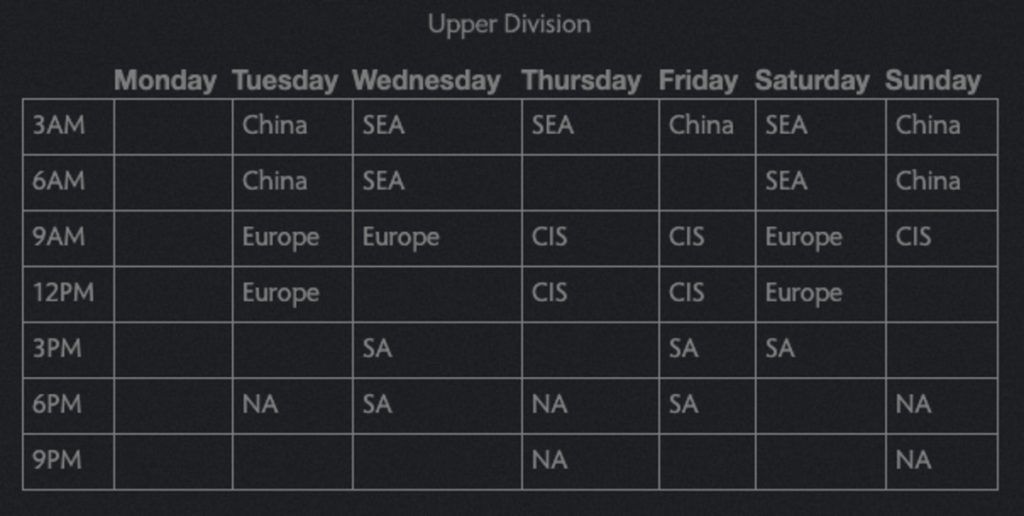
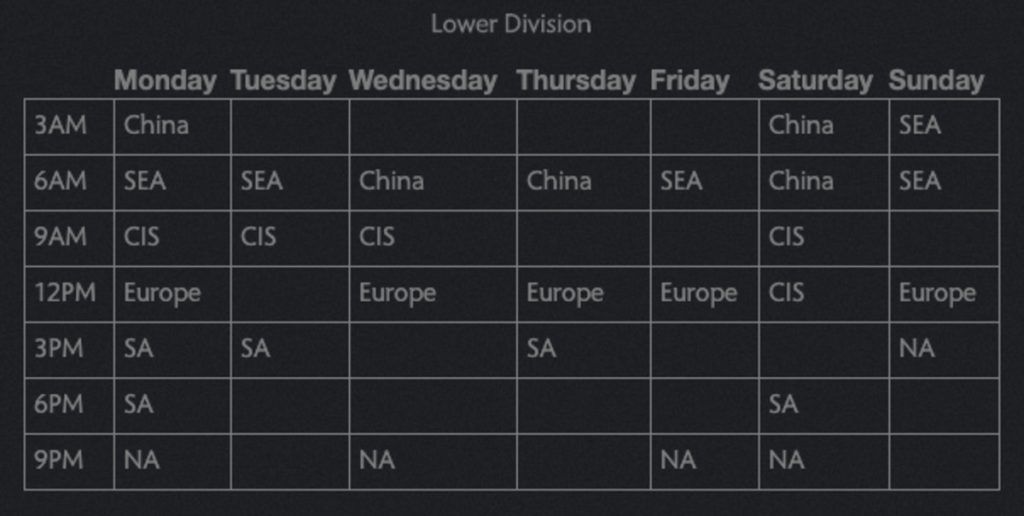
For the inaugural season under the new system, Valve itself will allocate the initial teams to the Upper and Lower Divisions for each Regional League. Teams also need to declare the region they choose to participate in before the season starts, with the remaining slots to be filled through qualifiers after TI10.
In order for a team to be eligible to compete in one of the regional leagues, three or more of the players in that team have to be residing in the region they want to compete in. Teams may also use a stand-in for up to four of their matches in a season as long as that stand-in is either competing in a lower division or not competing in a league at all.
Should a team decide to change regions, however, they will have to enter the league they want to transfer to through its open qualifiers and then climb through that its Lower Division.
But once a Regional League begins its season, all rosters will be locked until the end of the Major of that season. Roster changes are only possible after the Major concludes and until the beginning of the next season, with each player change a team makes incurring a 15% penalty on their current DPC point total.
- Nigma reverse sweep Secret to win WePlay! Tug of War: Mad Moon
- 8 teams will compete at the ONE Esports Dota 2 Jakarta Invitational Regional Qualifiers
Majors
Each of the three seasons in the DPC will conclude with a Major tournament that will feature 18 teams from all regions vying for the lion’s share of a US$500,000 prize and 2,700 DPC point pool.
The biggest changes with the new Majors is that they will have a fixed amount of slots for each region throughout the year, will no longer hold qualifiers to determine the participating teams, and have been split into three stages.
The 18 slots at each Major have been split with the competitiveness of each region apparently taken into account. As such, Europe and China each get four slots, North America and Southeast Asia both get three, while CIS and South America have two slots apiece.
While the Major technically has 18 slots, as many as 26 teams will actually be participating in it due to the addition of a new Wildcard stage.
The Major Wildcard Stage will precede the Major Group Stage and will feature six teams competing in a best-of-two Round Robin for the last two spots in the Group Stage.
The teams in the Wildcard Stage will be comprised of the third and fourth-placed teams in the European and Chinese leagues, as well as the third-place teams in the North American and Southeast Asian leagues.
Only two of those teams will make it to the Group Stage, while the other four will be going home empty-handed.
Moving on to the Group Stage, it will be another best-of-two Round Robin between eight teams. The top two teams will advance to the Upper Bracket of the Major Playoffs, the third to sixth place teams will advance to the Lower Bracket, while the bottom to teams will be eliminated.
The teams in the Group Stage will be comprised of the second-place teams in each Regional League, as well as the two teams who survived the Wildcard Stage.
The Major Playoffs will be the same Double Elimination bracket we are all familiar with, although there will only be 12 teams there instead of the 16 in the current DPC.
The Upper Bracket will be filled with the top teams of each Regional League and the two top teams of the Group Stage, while the Lower Bracket will have the third to sixth-placed teams in the Group Stage.
Aside from the aforementioned changes, another big change in the new Majors is that they will only award prize money and DPC points to the Top 8 teams.
Here’s the prize pool and DPC point distribution:
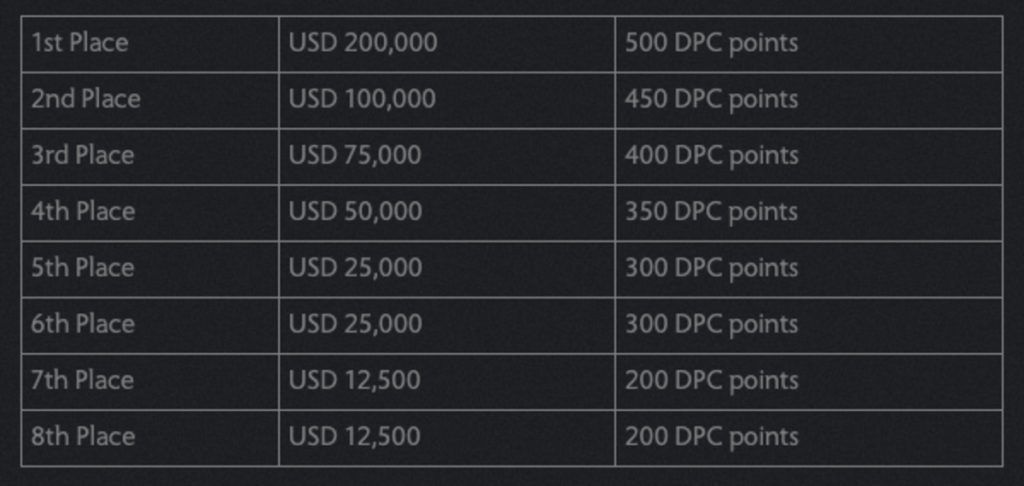
The International
As with the current DPC, the top 12 teams with the most DPC points will qualify for TI. The remaining spots will be decided through six regional final chance qualifiers, with each featuring the 8 best teams from each region that haven’t been invited to TI.
Perhaps the biggest change for TI under the new system is that there will no longer be any Open Qualifiers.
That, alongside the reward system for both the Regional Leagues and the seasonal Majors, clearly illustrates that Valve wants teams to perform consistently throughout the DPC if they want to compete in TI.
In the current DPC, a team can either place in the Top 4 of a Major or two then skip the rest of the season and still be guaranteed a direct invite to TI or go through the Open Qualifiers and earn their spot from there.
While that means we won’t see another Cinderella run from an Open Qualifier team, just like what OG did back in TI8, we can expect teams to perform on the highest level they can throughout the year as they scramble for those precious spots in TI.
Under the new system, with US$280,000 prize pools for each regional league across three seasons on top of three US$500,000 Majors, the total prize pool for the DPC will be US$6.5 million. That’s the same as with the current DPC structure, which has five US$1,000,000 Majors and five US$300,000 Minors.
READ MORE: Valve reveals massive changes to Dota Pro Circuit after TI10

